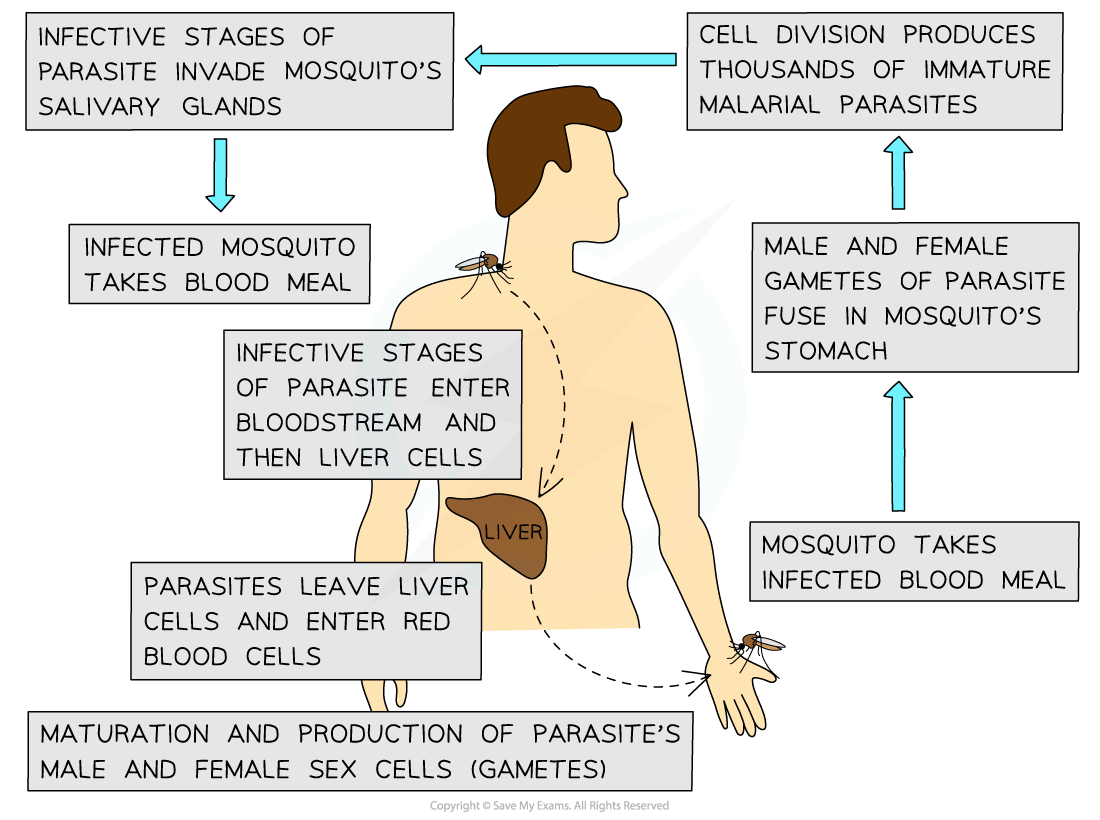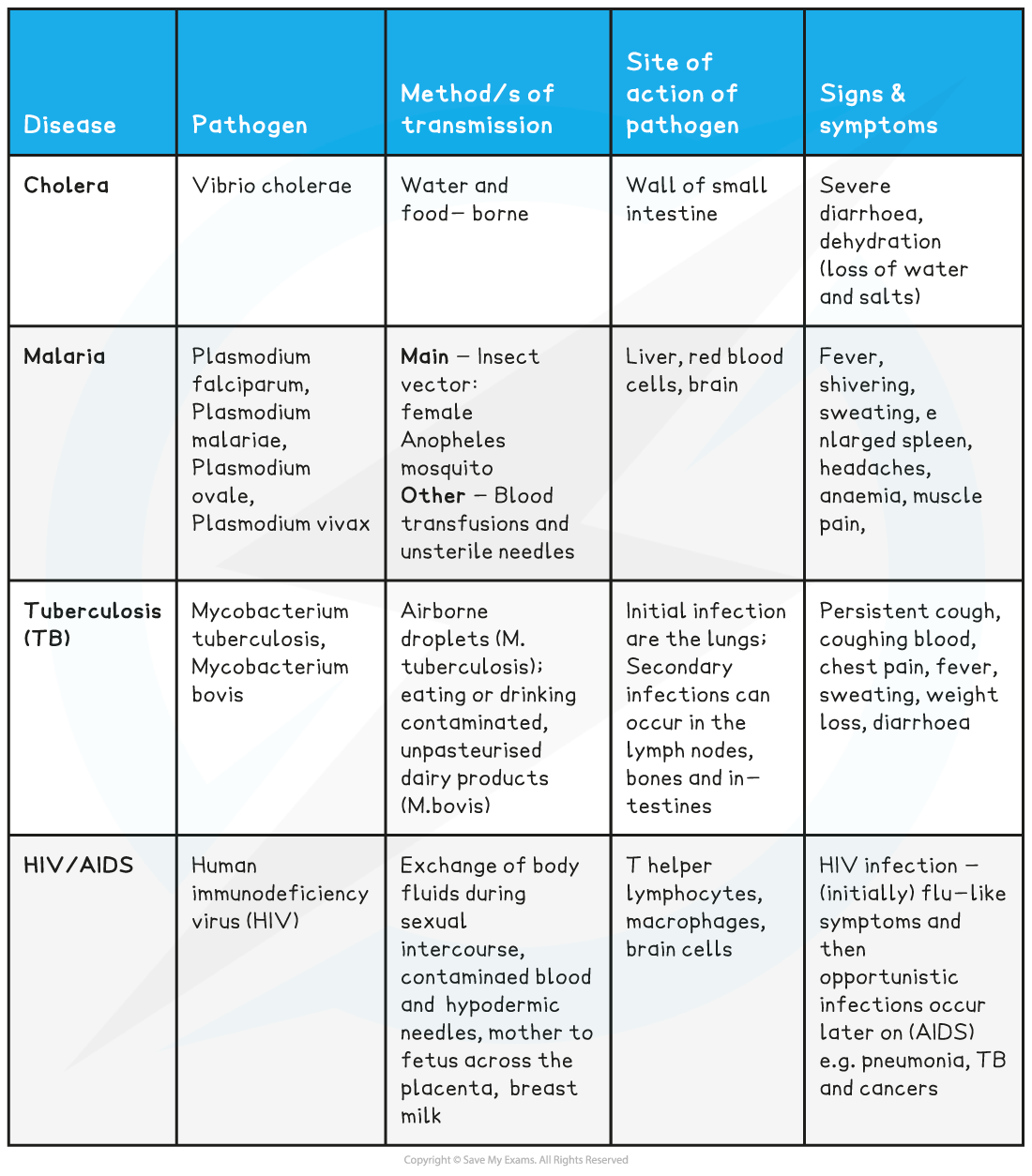- 翰林提供学术活动、国际课程、科研项目一站式留学背景提升服务!
- 400 888 0080
CIE A Level Biology复习笔记10.1.2 Transmission of Disease
Transmission of Common Diseases
Transmission of cholera
- Cholera is caused by the bacterium Vibrio cholerae
- The disease is water-borne (the bacterium lives in water) and food-borne
- This means the disease occurs where people do not have access to proper sanitation (clean water supply) and uncontaminated food
- Cholera can be transmitted when people; bath or wash in contaminated water, drink contaminated water, or eat food exposed to contaminated water
- Infected people egest large numbers of the bacteria in their faeces
- If these faeces contaminate the water supply, or if infected people handle food or cooking utensils without washing their hands, then the bacteria are transmitted to uninfected people
Transmission of malaria
- Malaria is caused by one of four species of the protoctist Plasmodium
- These protoctists are transmitted to humans by an insect vector:
- Female Anopheles mosquitoes feed on human blood to obtain the protein they need to develop their eggs
- If the person they bite is infected with Plasmodium, the mosquito will take up some of the pathogen with the blood meal
- When feeding on the next human, Plasmodium pass from the mosquito to the new human’s blood
- Malaria may also be transmitted during blood transfusion and when unsterile needles are re-used
- Plasmodium can also pass from mother to child across the placenta

The life cycle of Plasmodium
Transmission of tuberculosis (TB)
- When infected people with the active form of the disease cough or sneeze, the Mycobacterium tuberculosis bacteria enter the air in tiny droplets of liquid
- TB is transmitted when uninfected people then inhale these droplets
- TB therefore spreads more quickly among people living in overcrowded conditions
- The form of TB caused by Mycobacterium bovis occurs in cattle but is spread to humans through contaminated meat and unpasteurised milk
- Very few people in developed countries now acquire TB in this way, although meat and milk can still be a source of infection in some developing countries
Transmission of HIV/AIDS
- Human Immunodeficiency Virus is a retrovirus
- The HIV virus is not transmitted by a vector (unlike in malaria)
- The virus is unable to survive outside of the human body
- The virus is spread by intimate human contact and can only be transmitted by direct exchange of body fluids
- This means HIV can be transmitted in the following ways:
- sexual intercourse
- blood donation
- sharing of needles used by intravenous drug users
- from mother to child across the placenta
- mixing of blood between mother and child during birth
- from mother to child through breast milk
Cholera, malaria, TB & HIV/AIDS summary table

转载自savemyexams

早鸟钜惠!翰林2025暑期班课上线

最新发布
© 2025. All Rights Reserved. 沪ICP备2023009024号-1








